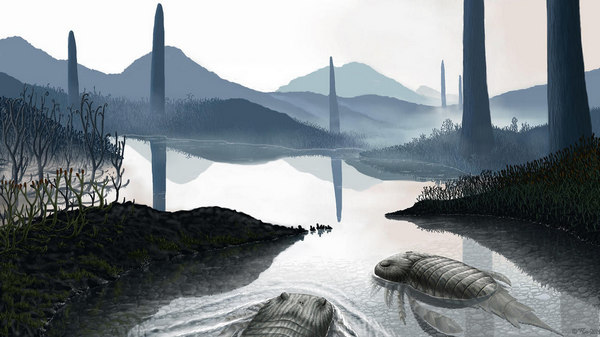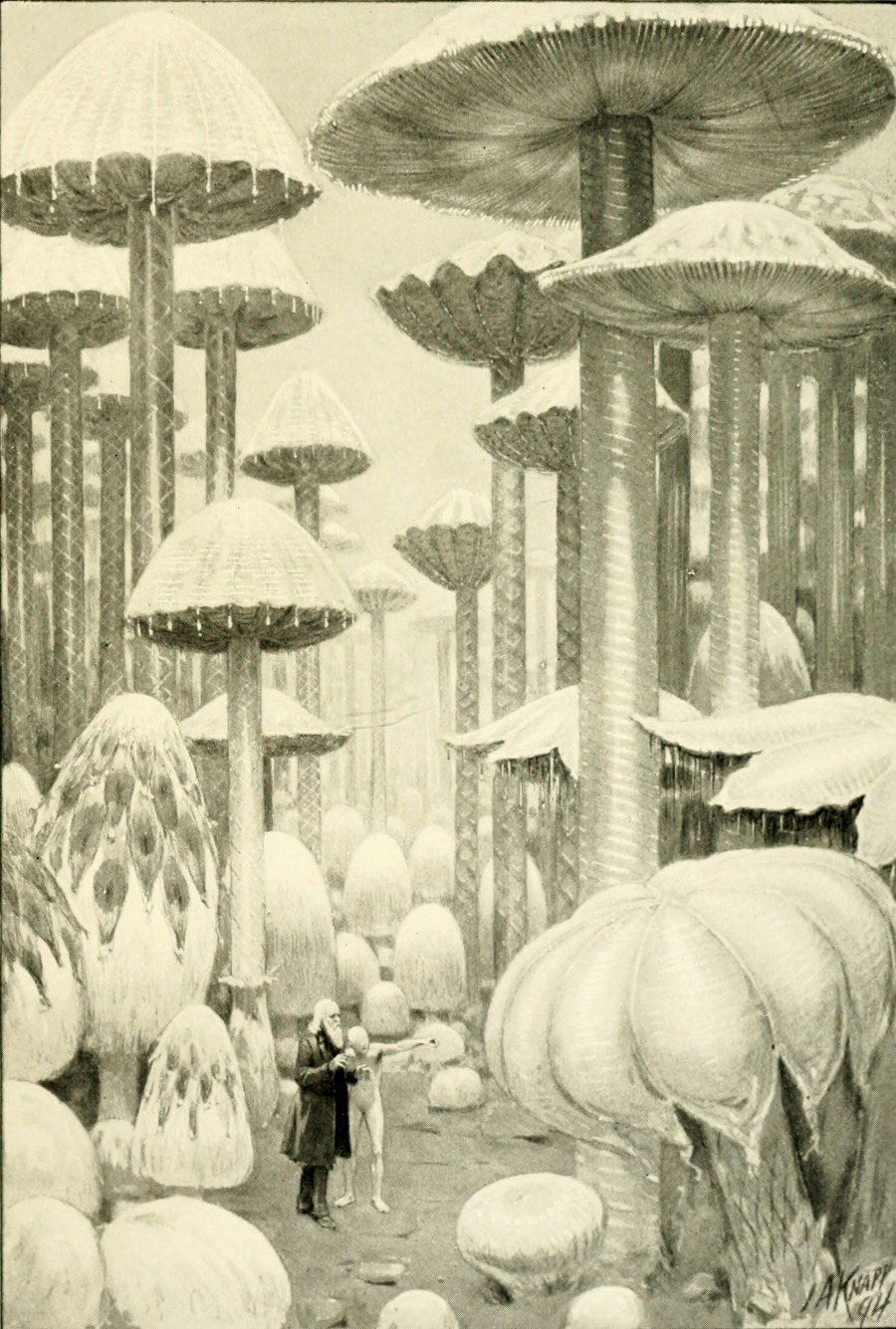“Mystery prehistoric fossil verified as giant fungus”. 18 to 26 foot high, possibly higher when ‘flowering’ to shed spores. So far as we know Prototaxites did not have the ‘mushroom caps’ that they have today. Just the ‘stalks’.
Picture: “Pioneers of the land” by Plioart on DeviantArt.
I also note… “A new Palaeozoic plant closely allied to Prototaxites”, identified in Nature Geoscience in 2012… “It differs from Prototaxites only in its possession of internally differentially thickened tubes.” One must now assume that these were also fungi.
Therefore, Lovecraft’s depiction of towering and gigantic fungi in the “Palaeozoic” period of Earth’s prehistory now seems somewhat prescient…
The omnipresent gardens were almost terrifying in their strangeness, with bizarre and unfamiliar forms of vegetation nodding over broad paths lined with curiously carven monoliths. Abnormally vast fern-like growths predominated; some green, and some of a ghastly, fungoid pallor. […] Fungi of inconceivable size, outlines, and colours speckled the scene in patterns bespeaking some unknown but well-established horticultural tradition.” (“The Shadow out of Time”)
He doesn’t pin down what these inconceivably giant fungi looked like and, in his focus on giant fern forests later in the tale, he stays within the then-consensus of science until 1906. After 1906 the consensus rapidly breaks down as seed-bearing fossil plants are discovered. There were still giant fern forests, but they are no longer thought to have dominated the land.
But we do get the clear idea, early on in Lovecraft’s tale, that this is a Palaeozoic world where there are also gigantic fungi. Also that some of what he thinks of as distant ferns (“fern-like”) may in fact be fungi (“some of a ghastly, fungoid pallor”).
Gigantic fungi were sometimes known in 1930s science fiction, though also known far earlier in time by the Lovecraft Circle. A remark by Lovecraft shows that many in the Circle knew the illustrated fantasy book Etidorhpa (1895) by John Uri Lloyd…
that strange old novel “Etidorhpa” once pass’d around our Kleicomolo circle and perus’d with such varying reactions
Illustrations for ‘Etidorhpa’ (1895).
They would also have known Verne’s Journey to the Centre of the Earth (1864), in which the shores of the Central Sea harbour a forest of giant mushrooms. Also the fungi landscapes of the H.G. Wells novel The First Men in the Moon (1901).
But was Lovecraft ahead of science on placing giant fungi both in the distant prehistoric past and living above-ground? It seems so. The 1911 Britannica passage on Palaeozoic | Fungi give the strong impression they were small or microscopic, and elsewhere has… “The few and incomplete data which we at present possess as to Palaeozoic Fungi do not as yet justify any inferences as to the evolution of these plants”. So far as I can tell from some searches, nothing much changes in the science for many decades thereafter.



